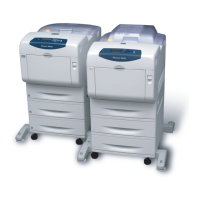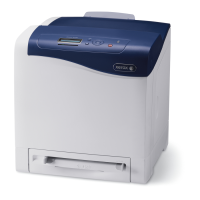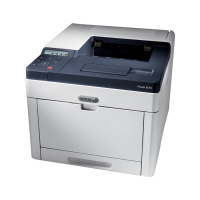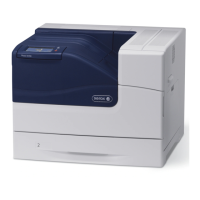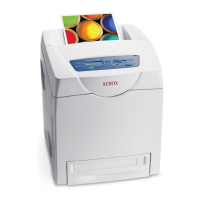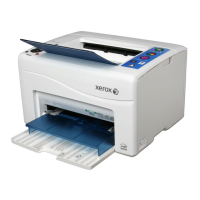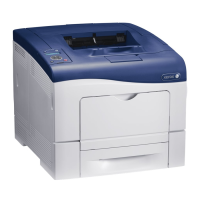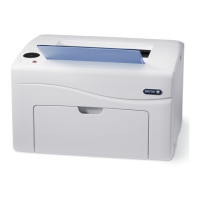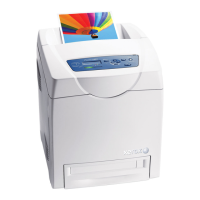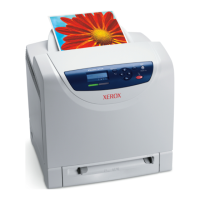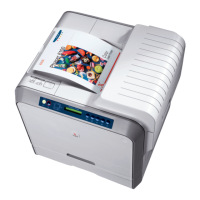2-10 Phaser 6300/6350 Color Laser Printer Service Manual
Toner Density Control
Toner density is kept constant to maintain a stable print image. To achieve this, the
rate at which toner is dispensed is adjusted to exactly match the rate at which it is
consumed. There are two systems that work together to control toner density: the
Pixel Count Dispense Control (PCDC) and the Toner Density Control (CTD). (The
CTD uses data from the ADC sensor, measured as described in the preceding
paragraphs covering bias control.)
PCDC: The amount of toner consumed in the developing process is determined by
counting the digital pulses applied to the Laser Unit as part of the Image data transfer.
Based on this count, the toner motor is driven to dispense an equivalent amount of
toner to compensate for the loss.
CTD (ADC): Toner test patches of each color (yellow, magenta, cyan, and black), are
generated and applied to the Transfer Roller as described in the Bias Control
discussion. The CTD (ADC) Sensor is used to measure the density of each patch. The
CTD (ADC) Sensor signal indicates how much to adjust the toner dispense time
(Toner Motor rotation) for each color. The CTD adjustment is made following
completion of printing under either the following conditions:
■ Cumulative print count since power on exceeds 16 pages.
■ When a cleaning cycle is executed during continuous printing.
If an adjustment to the toner quantity is necessary, a Dispense Count is calculated and
executed as a specific number of Toner Motor rotations.
The Dispense Count is implemented over the next eight prints. For example, if the
Dispense Count is 16, two dispense counts are added during each of the next eight
prints. This is in addition to any counts added or subtracted during each print as a
result of PCDC.
If the CTD (ADC) Sensor indicates that toner density is too high and that 16 Dispense
Counts are required to return toner density to normal, the adjustment is accomplished
by subtracting two counts from the calculated PCDC count over each of the next eight
prints. If the excess amount cannot be subtracted in 8 print cycles, it is subtracted in
the ninth and subsequent prints. The following figure illustrates this process.
Total Dispense Counts
Correction Amount By ADC +16
Dispense Counts By PCDC
Correction Amount By ADC -8
Total Dispense Counts
2 3 1 2 0 0 1 2 3 2
Even Allotment In First 8 Prints
4534223432
1201000022
s6300-067
